Read all about the police system in Norway, from how to become a police officer to how prosecutions work.
Norway is known more for its crime novels than for its actual criminal scene. That being said, it does have a police force of course, and that force has a few peculiarities.
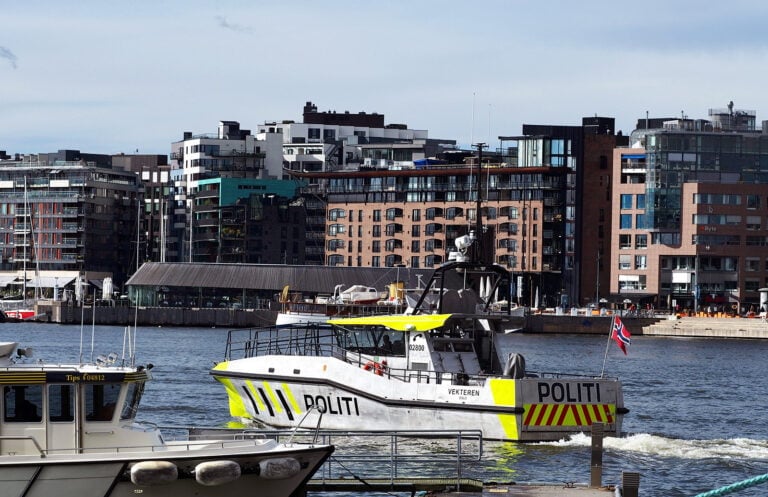
Did you know for example that all of Norway’s police officers are employed by the same police force? Or that some police officers in Norway act as prosecutors for minor crimes?
From the training Norwegian police officers receive, to the weapons they use (or don’t use), read on as we give you all you need to know about the Norwegian police and its inner workings.
How Norwegian police is organised
Norway has a unified police, which means that there is only one civilian police force in Norway. This contrasts to the situation in places like the United States or the United Kingdom, where regions or even cities can have their own police force.
The police in Norway operate under the umbrella of the National Police Directorate, which reports to the Ministry of Justice.
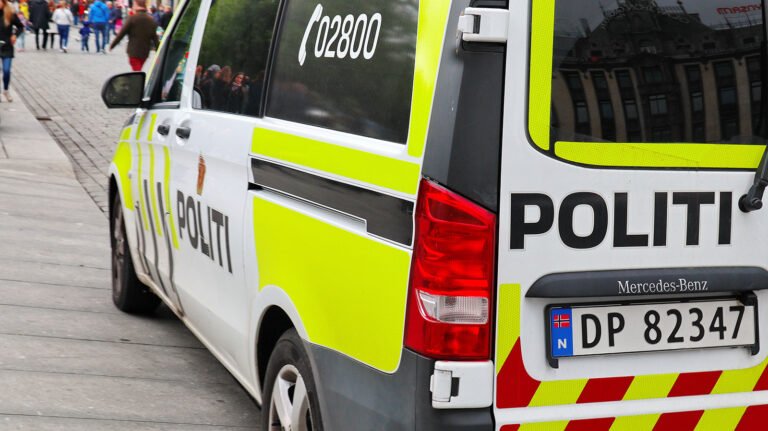
Norwegian police districts
Operations are divided between twelve police districts, which vary in size from the relatively small Oslo area, to the wide Arctic expanses of Finnmark. They are:
- Agder
- Finnmark
- Innlandet
- Møre og Romsdal
- Nordland
- Oslo
- Southeastern
- Troms
- Trøndelag
- Western
- Eastern
In addition to the twelve districts, the Norwegian police also has seven specialist agencies, dedicated to tasks such as border control, dealing with economic crime or investigating cybercrime.
If you arrive in Oslo from outside the Schengen area, for example, it is a police officer that will examine your passport.
Finally, we should mention PST, the Norwegian counterintelligence service, which reports directly to the Ministry of Justice. Its role in Norway is similar to the FBI’s in the United States: catching foreign spies and preventing acts of terrorism or sabotage.
The powers of the Norwegian police
Since there is a single police organisation in the country, police officers have no geographical limitation to their powers.
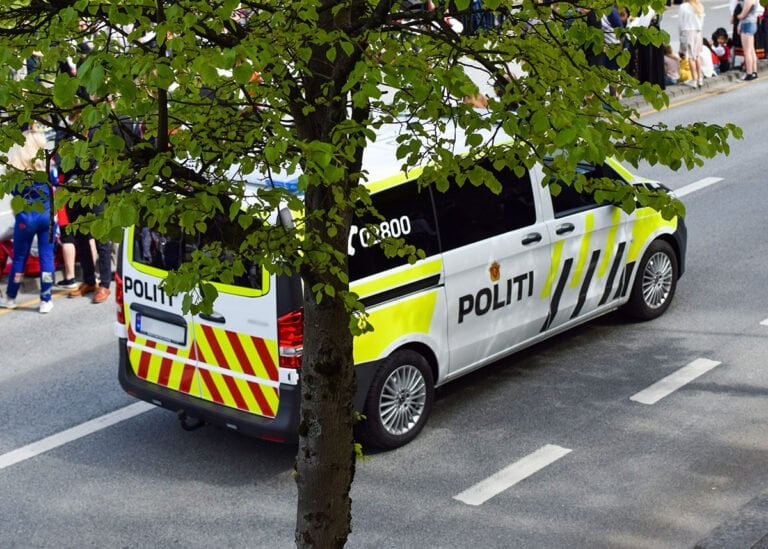
These powers fall under many different areas of responsibility: patrolling highways, responding to emergency calls and coordinating search and rescue activities.
Other responsibilities of the Norwegian police are ones that in other countries are assumed by other services: patrolling coastal waters, checking passports at the border and even acting as prosecutor in court, for certain crimes (more on that later).
Other duties include administrative ones, like issuing passports and identity cards, issuing firearms licences and performing background checks.
Becoming a police officer in Norway
Police officer training in Norway is a three-year university bachelor’s degree. The second year consists of practical training in the field.
Since their tasks are so varied, the education required also varies. The officers responsible for prosecution in court, for example, need a law degree.
Police prosecutors in Norway
The integration of prosecutorial powers to the police is a peculiarity of the Norwegian and Danish police systems. In most western countries, these powers are separate.
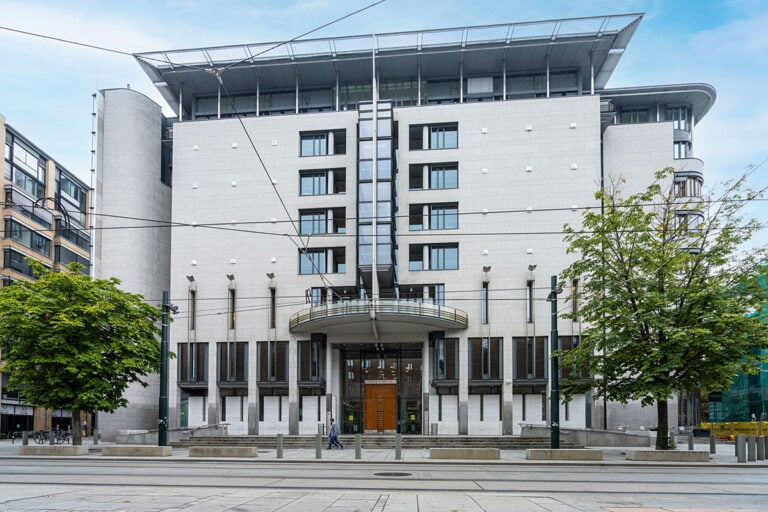
In practice, it means that a police investigation into a crime will often be led by a politiadvokat. Literally, that translates as “police lawyer”, but corresponds roughly to a British police superintendent. A US equivalency is harder to pin, since US police ranks tend to vary from one service to another.
The advantage of having prosecutors being part of the police is that a closer cooperation between the officers investigating a crime and the prosecution can result in a more coordinated investigation.
The drawback is that it removes a natural point of friction between the prosecution and the police that can prove useful in certain cases, for instance if the investigation is on the wrong track.
Police weapons in Norway
The police in Norway have a long tradition of not being armed at all times. Typically, the firearms are in the trunk of the police car, under lock and key.
This may be a bit shocking to some, but it makes sense when considering Norway’s very low murder rate, at 0.5 murders every year, per 100 000 inhabitants. In comparison, that rate in the United States is of 5 murders per 100 000 inhabitants.
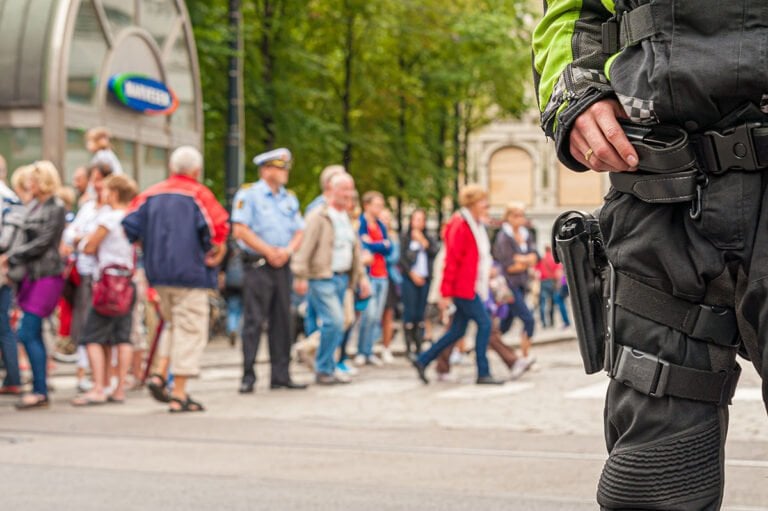
Since the end of the Second World War in 1945, 12 police officers have been killed in the line of duty, in Norway. In comparison, 15 officers of the Chicago police department were killed in the line of duty in the 1990s only (the population of Chicago is about half the population of Norway).
The comparison may be unfair, but it demonstrates that the crime rate in Norway is comparatively low, and that the need for firearms is not as present. The argument for maintaining this state of affairs is that an arms race between police and criminals serves no one.
That being said, the police have been carrying firearms on a greater number of occasions this past decade. More often than not, these exceptions to the rule have been made because PST warned of a greater perceived terrorist threat.
What weapons does the Norwegian police use?
When they do carry firearms, Norwegian police use German Heckler & Koch MP5 submachine guns and Heckler & Koch P30 semi-automatic pistols. Delta (the Norwegian SWAT team) uses Diemaco C8 assault rifles.
A three-year pilot project started in 2019 gave Norwegian police the possibility to use tasers as a non-lethal weapon. This pilot project was deemed successful by the authorities and the government decided to allow police to continue using tasers in their operations.
Police in daily life
One notable detail about the police in Norway is that it’s not as visibly present as in many other countries.
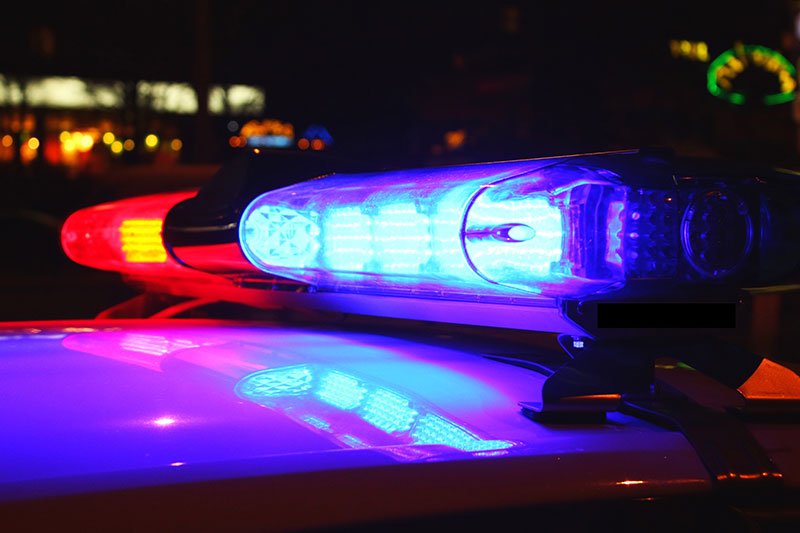
Whereas police officers can be seen driving, walking, cycling or riding horses in large North American cities, at times when “everything is in order”, that sight is not as common in Norway.
In Norway, police is mostly visible when it’s on its way to a crime scene or some other incident, when it’s keeping watch at a large protest, or when it’s guarding the embassy of a foreign country that is judged to be a target (for terrorists, for example).
That’s not to say that Norwegian streets feel unsafe, or that the police are not doing their job. They are just less visible.
Another difference is the relatively laid-back tone in which they are seen talking to members of the public, suspects or victims. The police methods seen on TV shows such as COPS may not be an accurate representation of reality in the US, but they are certainly very far from the Norwegian norm.
Prisons in Norway
Norway’s prison system puts a focus on rehabilitation and its low reoffending rates. The system is so different from many other countries in the world that we've covered it in detail here.
Tell us what you think
Have you visited Norway and observed police officers in action? Are you a member of a police force yourself? Chime in in the comments – we would love to hear what you think.


The fact that those who file criminal charges work for the same bureaucracy as those who prosecute those charges is downright scary – a built in opportunity for collusion where a clear separation of powers would have been preferable.
On the other hand, the U.S. practice of permitting mayors of every Podunk city to appoint their own chief of police is beyond scary – it’s an insanity that gives rise to variable rules, variable enforcement, and arbitrary punishments (the U.S. has more imprisoned persons per capita than any country on earth).
The inevitable abuses are manifest in the condition where one can’t have an abortion after 6 weeks in Texas, 15 weeks in Utah, and 25 weeks in California. On a more trivial level, an automobile driver is permitted to make a right turn at a red light in California, but not in Nevada. The rules of the road are contained in a book called the Vehicle Code. It’s about 1,500 pages long in California, but there are 50 different books across the U.S. because of the unfortunate notion of “states’ rights” embedded in the U.S. Constitution – every state gets to make its own rules. It’s less like a unified nation than it is an amalgamation of independent countries.
Glad to be an expat…
And the current pats are glad you’re an Ex. The farther you’re removed from the decision making processes, the safer we are. Glad you found a place where you have even less impact on your own community.
Australian police services (State based) also employ police officer prosecutors. Patrolling Australian police until recent years carried their firearms in vehicle gloveboxes, but now wear them openly. Federal Police have wider powers of anti-terrorism and drug trafficking responsibilities throughout the country, co-operating with State Police and Border Force.
I am an ignorant yank. Can you please tell me if it’s true that offenders are permitted to use their personal cell phones at certain points of the day in Oslo’s jail?
Mobile phone in prison. Initially, no. But under special conditions, prisoners can access the internet. An example could be that a prisoner is in education.
In order to face the future, prisoners must be prepared to take care of their freedom. Because when a prisoner is free, we as a society cannot look after them, or take care of them.
Interesting to read!
When I first came to Norway that was in Oct. 2012, I was directly taken from the airport to the police station in Skien. I really thought that I was taken to a kind of a clinic for some sort of quarantine. Because all those I saw in the building were women and had no weapon at all. Later, when I knew it is a police station, I felt a little bit insecure. In my little african head, women and on the top of that unarmed can hardly deliver any security. But after I read stories such as this one and I knew there is nothing to fear in this beautiful and peaceful land!